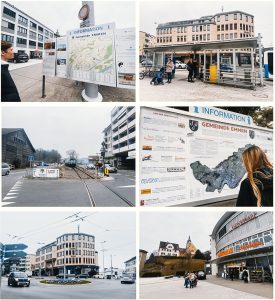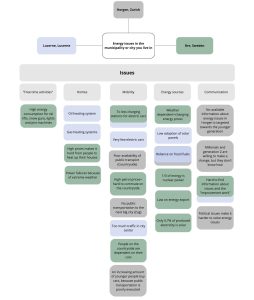Our team took a walk from the Viscosistadt up on the Gerliswilstrasse to the Sonnenplatz. On the way, we stopped by some information signs to reading about Emmen.
My impressions
Previously I have only been running by the river in Emmen, which I found really nice, but the general impression of the municipality isn’t the best. It’s a lot of traffic, constructions, loud airplanes, old building electricity cables hanging over the roads and it gives me an industrial and a bit sad vibe. It feels like the town has lost a bit of its shine over the years. I got positively surprised by the Sonnenplatz, there they had a mall with a big Migros, people walking around, flowers, a pretty coffee place, and the yellow church. I also found it positive that the busses run on electricity, even though the cables are quite ugly.
Approaching people
At the Sonnenplatz my teammates approach an old woman, and because of the language barrier and corona, I kept some distance and watch the conversation. Later, they told me that she have been living there for over 60 years and that she had really seen Emmen change over the years. She was also aware of the energy project but didn’t know what exactly it was. She told us that she uses geothermal energy in their house. What surprised us was that she was really stressed despite her age.
What I take with me
I think it was interesting to walk through a town and just try to understand the people and the surroundings. That’s something you rarely do, and it got me thinking in other ways. I asked myself „why?“ a lot of times, and I also tried to understand the municipality from their eyes. Overall it was fun to see more of Emmen because I have a better understanding of the area and it makes the project more tangible to work with.

/ Lin Ivarsson

